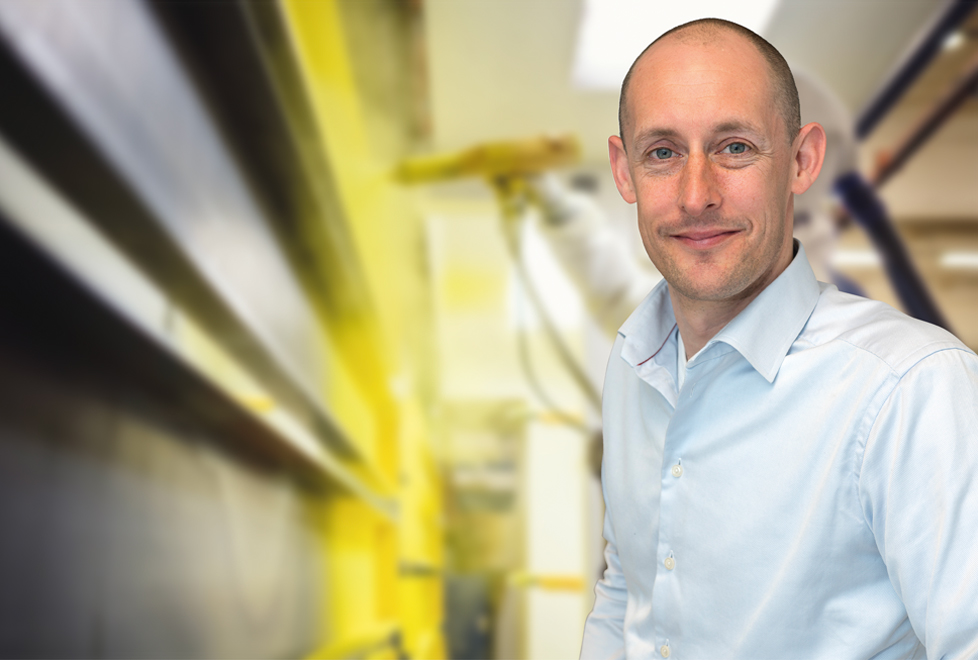Powder coating or wet painting?
Ben Hoppener: “Impact resistance of powder coating is important advantage”
Wet painting is a centuries-old process used for the treatment of various surfaces. In the 1970s, another process for industrial treatment of metal surfaces arrived: powder coating. What are the advantages and disadvantages of wet painting and powder coating? Ben Hoppener from Coatingadvies Nederland in Udenhout shares his views.
Hoppener has worked as a consultant for clients such as Brabantia, Philips, Heras Hekwerk and SixPointTwo. “My colleague and I work all over the world. We support both powder coating companies and production companies with in-house powder coating lines.” The support is mainly aimed at the setup and optimisation of production lines, and at quality improvement across the entire process. “At the time, I advised SixPointTwo on the design of the powder coating line.”
Powder coating easily automated
The comparison between wet painting and powder coating starts with a crucial factor: the layer. “Powder coating applied properly produces a strong layer. This layer is resistant to bumps and scratches, and is not easily damaged. An important advantage.” Another advantage is that powder coating is easier to automate than wet painting. “A large part of the surface to be treated can be powder coated using a spray robot. It doesn’t require complicated settings. The operator can spray awkward spots by hand.” Powder coating is also more practical in terms of drying. “The treated products are put into the muffle furnace. Inside, the powder melts and becomes hard as a rock. The products can then be packaged immediately. Wet-painted products, on the other hand, often take a few days to dry.” The fact powder coating requires a muffle furnace, does constitute a disadvantage. “You can’t really powder coat a steel bridge or other extremely sizeable products. There are some exceptions, but about 15 metres is usually the limit. You would need furnaces of such dimensions that powder coating is no longer financially attractive.”
Environmental and health & safety aspects
How do the two processes score when it comes to environment and health? “Firing the furnace takes quite a lot of gas: this is a disadvantage of powder coating.” Wet painting has a different drawback. “The yield is much lower than that of powder coating. This is because with wet painting, the overspray – the quantity that is sprayed next to the product – is completely lost, unlike with powder coating. A recovery system on the sprayer can return the overspray to the storage tank for reuse. As such, the powder used can achieve a yield of up to 95%.” What about personal safety? “Wet paint often contains solvents that are released during spraying and the drying process. Powder coating, on the other hand, contains no solvents, so that less personal protective equipment is required.”
Operator professionalism is important
The corrosion resistance of the treated product partly depends on the type of powder coating used. “However, pre-treatment is just as important with powder coating”, Hoppener says. “It requires a controlled, systematic process.” Many companies, including SixPointTwo, have fully automated this process. “The products always receive the same pre-treatment, which includes chemical baths.” Operators use fixed procedures to measure whether the pre-treatment baths have the desired composition. Other parts of the process are automated too. “The settings for the muffle furnace have to be just right, and these are different for every product. Other factors are dosing the powder, writing correct programmes for the powder coat equipment, and the layer thickness.”
Well-trained operators are indispensable here. “I give practical training as far away as Israel and China. I go out on the shop floor in my overalls to impart knowledge and skills, just as I did at SixPointTwo.” Hoppener can also be of assistance in carrying out checks on the final quality of the coating, such as its resistance to environmental influences, through his company M2LAB.
Latest developments
According to Hoppener, there are no spectacular developments in the world of powder coating. “There are still powder coatings being developed that last longer and longer, like coatings for high-end facade construction that can easily withstand 20 years of sun, for example.” The market is more or less established. “Wet painting is often more suitable for very large products, for products where an extremely high-quality visual finish is required, or if a few products just need a quick coat. For large batches of not-too-sizeable products, powder coating is actually always the best solution. It makes the coating much stronger and it is often cheaper because it can be fully automated.”
SixPointTwo has an advanced powder coating line. If you would like to find out more, please contact Willian van Eerd, willian.van.eerd@sixpointtwo.eu.

